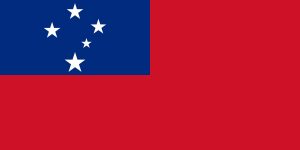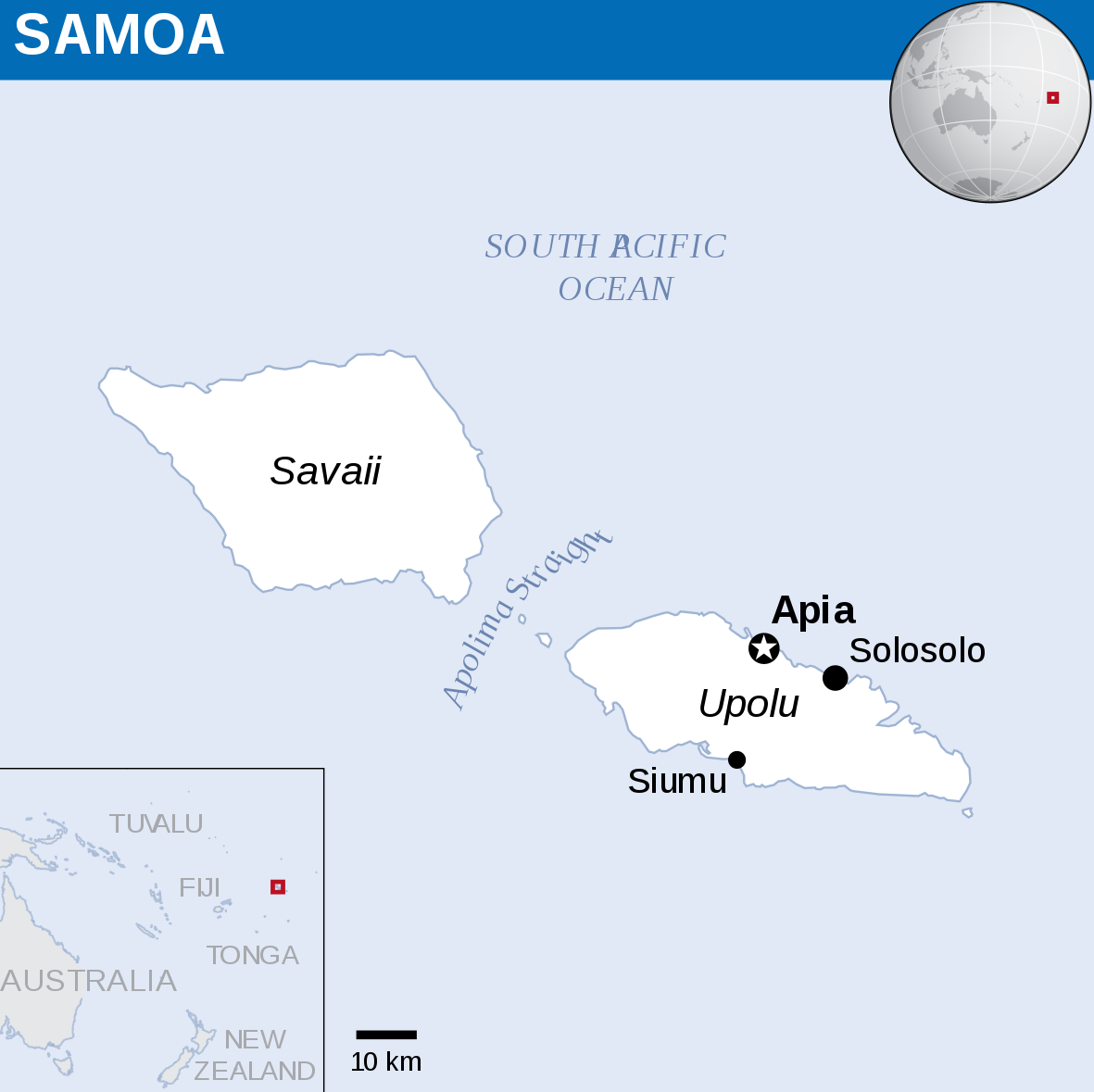
Samoa
International Disaster Response Law in the Pacific
Overview

Legal Preparedness for International Assistance Assessment
1. Does Samoa have a clear legal framework for disaster risk management which includes procedures relating to international disaster assistance?
The National Disaster Management Plan sets out these procedures in paragraph 2.1.10 and paragraph 3.3. This states that international humanitarian “clusters” will work with an appropriate sector upon an official request from the Government through the Ministry of Foreign Affairs and Trade.
The Standard Operating Procedure for requesting international assistance is set out in Appendix 7 of the NDMP. The SOP is relatively comprehensive, and places this responsibility in the hands of MFAT.
2. Do Samoa’s laws and regulations clearly set out a focal point for coordinating international disaster assistance?
The request for international disaster assistance must come from MFAT as specified under the NDMP. Once a disaster has been declared, the NEOC will conduct an initial assessment through the NDMP sector approach. The assessment is then passed to the DAC and then to the NDC who will make the decision to request aid from international agencies and development partners. No specific criteria exist to determine when such a request is appropriate. The Disaster Management Office (operating as part of the NEOC) is to coordinate response activities and the implementation of the NDMP during disasters and emergencies (s 7(5) of the DEMA) and thus has responsibility for the coordination of such aid.
Specific requests from government agencies must go through the NEOC process and will be addressed by the NEOC Aid Coordination Committee. In addition, offers may be made by NGOs and international partners with a presence in Samoa. Although not outlined in the NDMP, such formal offers are accepted through a request to ensure records are kept of such assistance.
In addition to the formal processes outlined above, it is recognised that aid programmes in Samoa can be adjusted to address response or recovery needs.
3. Do Samoa’s laws and regulations outline the roles and responsibilities of different institutions relating to international disaster assistance?
Part 2 of the DEMA sets out the functions and responsibilities of the National Disaster Council, the DAC, the Ministry, and the NEOC.
Within the Ministry, the Disaster Management Office has specific roles in times of disaster/emergency (s 7(5) of the DEMA). These include:
-
Assisting response agencies to prepare plans;
-
Coordinate response activities and the implementation of the NDMP during disasters and emergencies;
-
Publicise the NDMP and liaise with communities and private industry representatives to raise awareness about disaster planning and the approved processes for responding to such disasters and emergencies.
Part 4 of the Act sets out the responsibilities of the Response agencies (as set out in the Act) in preparation for, and in times of, disaster.
The NDMP also sets out the roles of institutions in the Disaster Risk Management structure (the National Disaster Council; the DAC; the Disaster Management Office; and Communities) at 4.2.
4. Do Samoa’s laws and regulations outline a process for requesting/terminating international assistance?
The Standard Operation Procedures (SOPs) attached to the NDMP at Appendix 7, sets out the process for requesting/accepting international assistance outlined above. All aid must comply with the requirements of these SOPs.
There are no apparent processes for terminating international assistance.
5. Do Samoa’s laws and regulations provide for necessary legal facilities to be provided to international assisting actors?
A number of Samoan Acts provide some of the legal facilities required but these remain uncoordinated. They exist across several acts and within the executive discretion of several Ministries and agencies.
For example, the Diplomatic Privileges and Immunities Act 1978 can provide diplomatic immunity to International Organisations through an Executive Order but only to the extent provided in the order (i.e. not full diplomatic immunity as applies to state diplomatic representatives). However, state diplomatic privileges only apply to the formal diplomatic mission. This is addressed during times of disaster with ad hoc arrangements when the existing diplomatic privileges do not extend to the individuals concerned.
Some International Organisations are covered by the Declared International Organisation Order 1998 which provides diplomatic privileges to all persons working for specifically listed organisations. Beyond this, only staff in recognised International Organisation missions specifically employed to operate in the field of disaster relief will be covered. The 2016 IFRC report on IDRL in Samoa recommended that the current system be simplified to cover all individuals who are authorised to enter Samoa for the purposes of disaster relief.
6. Do Samoa’s laws and regulations set out quality standards for international assisting actors?
The requirements of aid standards are found in the SOP (Appendix 7 of the NDMP). This sets out that resources provided by international assisting actors must be for resources either not readily available in Samoa or in limited supply, or where such resources are required to assist with the emergency relief and recovery efforts and responses.
7. Do Samoa’s laws and regulations set out eligibility requirements for international assisting actors to receive legal facilities?
There is no formal eligibility requirement at present for legal facilities to be granted.
However, paragraph 3.3.2 states that the NEOC is responsible for providing information on donors’ assistance to Customs and Agriculture & Fisheries personnel to facilitate the necessary arrangements for clearance of all donor assistance being provided for disaster relief purposes. Goods purchased locally with disaster relief funding are to be exempt of duty.
However, international assistance is not by definition exempt from Customs and Tax. The Minister of Revenue may provide an exemption to classes of goods under the Customs Tariff Act 1975 upon the advice of the Comptroller of Customs.430 A general power of discretionary exception also exists under s337 of the 2014 Act.431 In addition the Minister can specifically exempt goods supplied to an organisation covered by an inter-state (or UN) agreement. In addition, Cabinet-approved disaster relief agencies can also be granted immunity from import and excise duties, although in these cases VAGST of 15% continues to apply. In all cases, specific orders or approvals must be made for the exceptions to apply. VAGST can be avoided if the goods supplied are from a charitable organisation or via a formally agreed aid project.
When such legal exceptions do not apply it is current Samoan government practice to cover the costs of VAGST when the aid has been requested or approved by the DMO or NEOC.
8. Do Samoa’s laws and regulations establish a specialised unit for expediting the entry of international disaster assistance?
The laws and regulations specify MFAT as the primary agency for all formal requests of international assistance. However, the responsibility for such assistance when it arrives is spread across several agencies. The NEOC plays the coordinating role but beyond this the legal framework is unclear.
9. Do Samoa’s laws and regulations provide adequate transparency, safeguards and accountability mechanisms governing international disaster relief and initial recovery assistance?
There are no specific laws surrounding accountability and transparency around financial aid in the event of a disaster. However, the Public Finance Management Act 2001 (PFMA 2001) has provisions for emergency expenditure under a State of Emergency. In relation to overseas aid provision, the practice has been to create a separate bank account to handle these payments. During a proclaimed disaster or emergency, the DMO and NEOC have sole authority for the procurement of essential goods, services and equipment. A fast track process is operated by the Ministry of Finance. In such circumstances the Ministry of Finance controls all funds.
All disaster relief accounts are audited and the reports placed before Parliament. It has become standard practice for the Ministry of Finance to make the report on disaster relief and expenditure publicly available post-event. However, despite these mechanisms concerns remains around the delays which private businesses have in receiving payment through government channels for services rendered during the response and early recovery phase.
Currently NGOs (with the exception of the Red Cross) do not operate to public auditing standards in relation to their relief efforts.
10. Do Samoa’s laws and regulations outline procedures for international disaster assistance sent from and transiting through Samoa?
No, there does not appear to be provisions for the international disaster assistance sent from Samoa, although the Standard Operating Procedure in Appendix 7 of the NMDP would apply to transitioning aid.
Laws, policies, plans and other resources
-
National Alert System SOP 2007
-
National Tropical Cyclone Plan 2006
-
National Tsunami Plan 2006
-
National Disaster Management Plan 2017–2020
-
Statement made at the global platform for DRR 2017
-
Statement made at the third UN World Conference on DRR 2015
-
Statement at Third International Conference on Small Island Developing States 2014
-
Samoa National Action Plan for Disaster Risk Management 2017–2021
![]()

